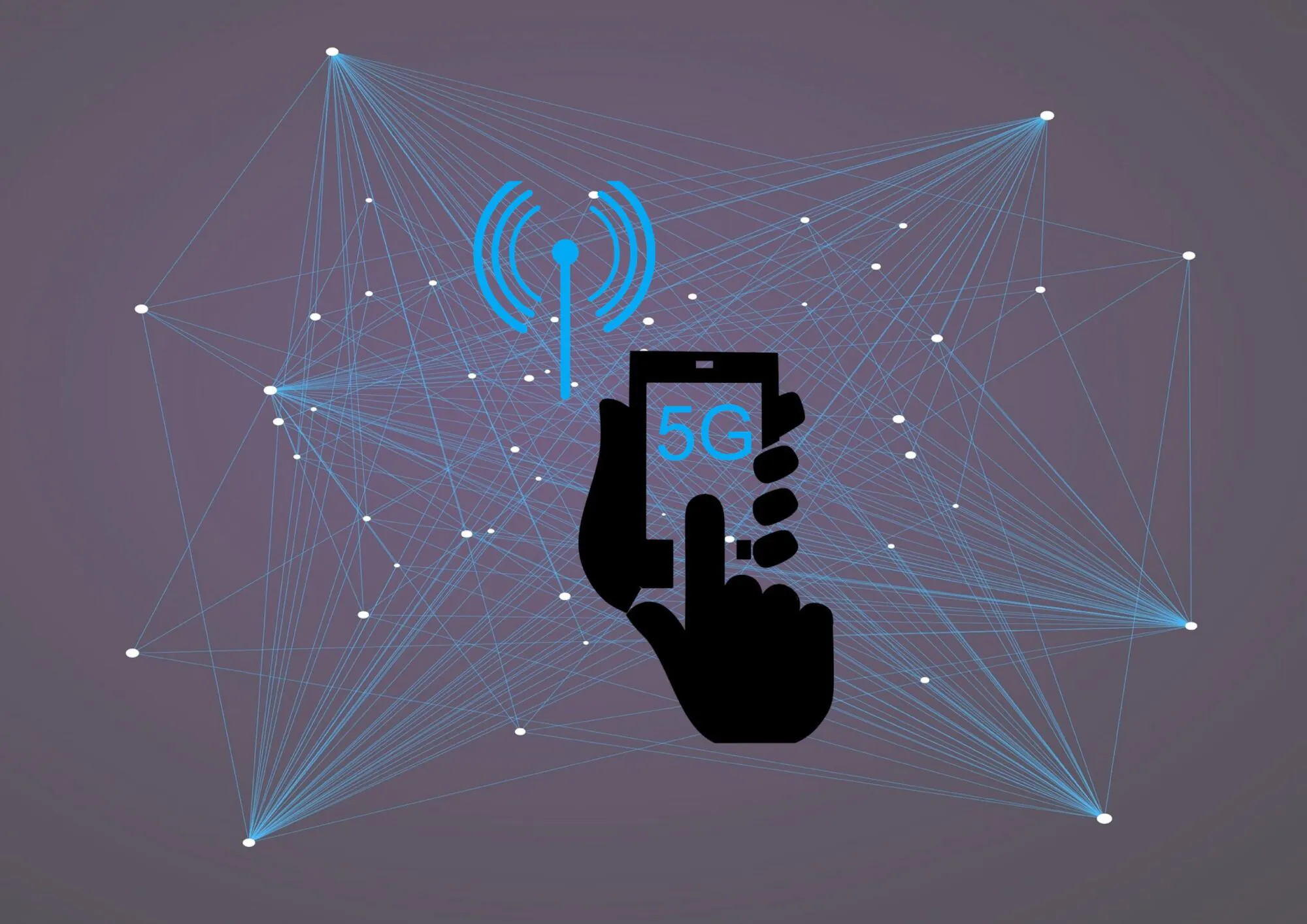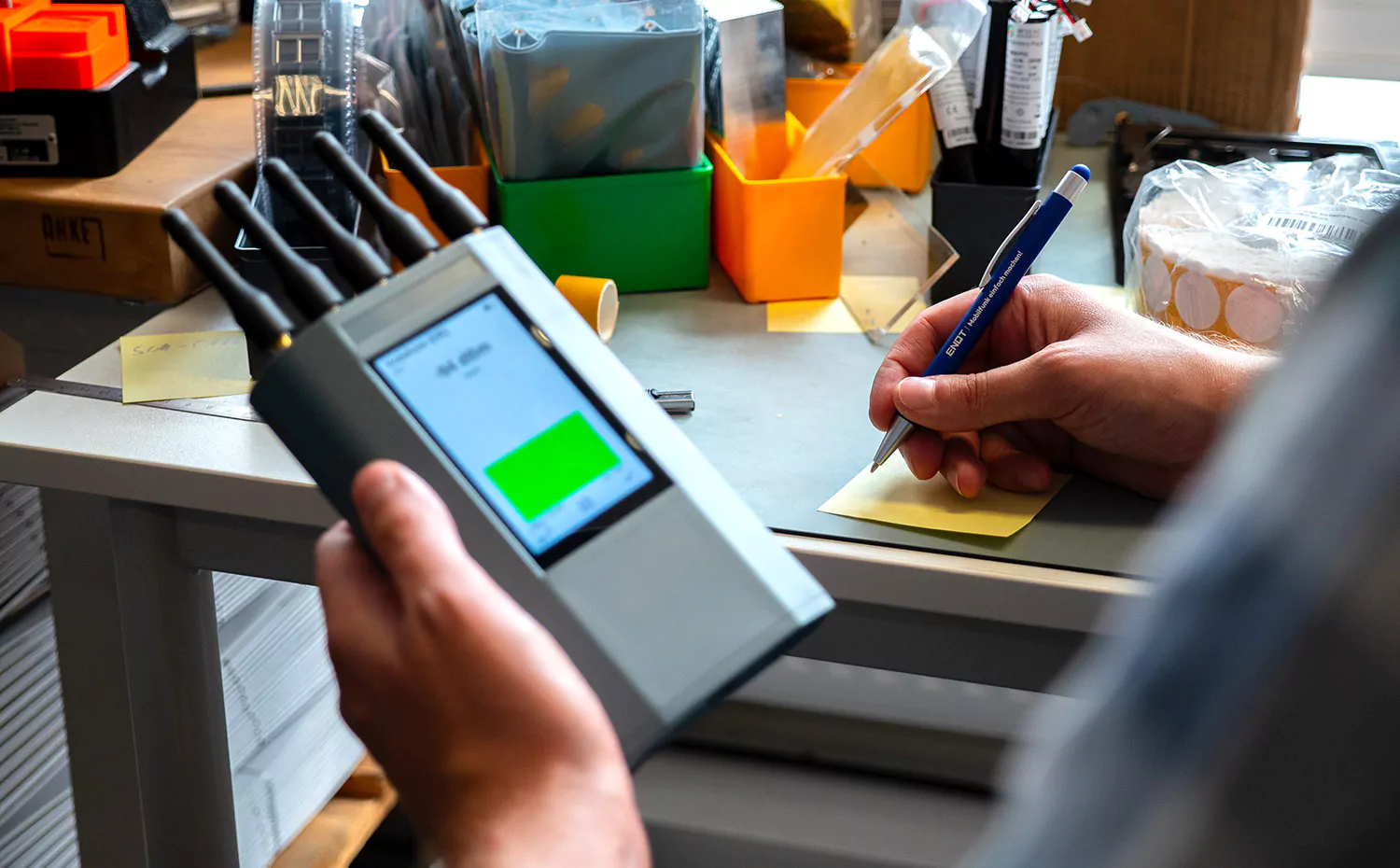Coverage of the new 5G mobile communications technology is steadily increasing in Germany. More and more base stations and radio cells are being equipped with fast 5G. In parallel, the LTE networks (4G) are also in operation. 5G allows the use of frequency ranges not previously used for mobile communications. In the following article, we explain the effects this has on range and the differences between LTE and 5G in this respect.
The radio frequency as a key factor influencing range
Before we look specifically at the ranges of the 5G and LTE networks, we will first briefly go into the dependence of the range on the radio frequency used. The following principle applies: The higher the radio frequency and smaller the wavelength, the lower the achievable range. Low radio frequencies with large wavelengths propagate over greater distances and penetrate objects such as walls better. At the same time, however, the achievable data transmission rates decrease with increasing wavelength. There is a conflict in the use of frequency bands for mobile networks: either low frequencies with a long range and low data rates (few base stations are required) or high frequencies with a short range and high data rates (many base stations are required).
LTE ranges
LTE networks transmit on different frequencies. In Germany, for example, these are 800 MHz, 1,800 MHz, 2,100 MHz or 2,600 MHz. As explained in the previous section, LTE achieves the greatest range at 800 MHz. It is approximately 10 to 15 kilometers. This frequency band is therefore preferred for covering rural regions. LTE radio stations with frequencies of 2,100 MHz or 2,600 MHz generally achieve maximum range after a maximum of two to three kilometers. Network operators prefer to use these frequencies in cities. A high radio cell density is necessary there because many people need to be supplied with mobile communications.
5G ranges
5G technology is advancing into completely new frequency ranges. The mobile communications standard allows the use of a huge frequency spectrum starting from below one GHz to 30 GHz and more. 5G with radio frequencies below six gigahertz is referred to as sub 6 5G. The high frequencies of 20 GHz and more are referred to as millimeter waves.
Sub 6 5G uses some of the same frequencies as LTE. In addition, there is the 3.6 GHz frequency range, which was recently auctioned off. In terms of range, Sub 6 5G differs only slightly from LTE. Similar large areas can be covered with the same number of radio masts and base stations. Although the 3.6 GHz frequency range is significantly higher than the range previously used for LTE, thanks to new 5G techniques such as beamforming, which sends radio waves bundled and targeted to the receiving device, the range is approaching the frequencies in the 2 GHz range. The 700 MHz band can be used to supply rural regions with 5G. It enables ranges of 15 to 20 kilometers. However, the data rate remains limited to 100 to 200 megabits per second.
The picture is completely different with 5G at millimeter waves. These frequency ranges allow data rates in the multi-digit gigabit range. However, the range is limited to a few hundred meters. Building walls are penetrated only very poorly, which is why in many cases a line of sight is required between the radio mast and the mobile terminal. When using millimeter waves, mobile network operators are forced to install a large number of small radio cells (microcells or small cells), sometimes even inside buildings.



